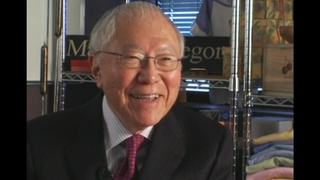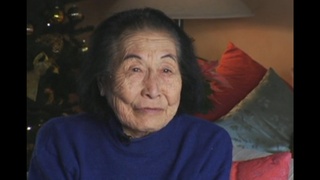Interviews
Kids working hard
I think my mother’s generation, like your grandmother’s generation, the Confucian ethics were instilled in them ever since they were young, [what] they learned in grade school. And I think that’s what [I learned] working with many picture brides, too. I really learned a lot from them because that’s what gave them the strength to endure, to persevere.
And for my mother, being a single mother, it must have been hard because I think not only doing laundry, I think she was determined to send us at least to the eighth grade. And so, most kids—my friends—many of them went only to the fifth grade because the parents couldn’t afford because they had to work in the fields. And field work, they paid only—my brother worked in the fields day after graduation from eighth grade. They were paid, really, only about 50 cents a day for 10 hours of hard work. And during summer, they got paid only 25 cents for a day, all the school kids. And so, it was tough for the kids.
Date: February 19, 2004
Location: Hawai'i, US
Interviewer: Lisa Itagaki, Krissy Kim
Contributed by: Watase Media Arts Center, Japanese American National Museum.
Explore More Videos

Training for football by carrying 100-lb bags of grass over mountains
(b.1925) Nisei of Okinawan descent. Had a 38-year career in Japan as a baseball player, coach, scout, and manager.

Teaching at the military language school during World War II
(b. 1924) Political scientist, educator, and administrator from Hawai`i

Lesson learned from community college faculty
(b. 1924) Political scientist, educator, and administrator from Hawai`i

Japanese school
(b.1924) Japanese Canadian Nisei. Interpreter for British Army in Japan after WWII. Active in Japanese Canadian community

Strict school policy of separating boys and girls in Japan
(b.1920) Japanese Canadian Nisei. Established the Ikenobo Ikebana Society of Toronto

Growing up outside of Portland’s Japanese community
(b. 1921) Nisei businessman. Established "Made in Oregon" retail stores

Education in a Buddhist temple and a country school
(1914-2018) Founder of the largest gladiolus bulb farm in the United States.

Closing the Japanese school and deportation (Spanish)
(b. 1932-2016) Peruvian painter


Learning Japanese at school and at home with family
(b.1951) Co-founder and managing director of San Jose Taiko.





